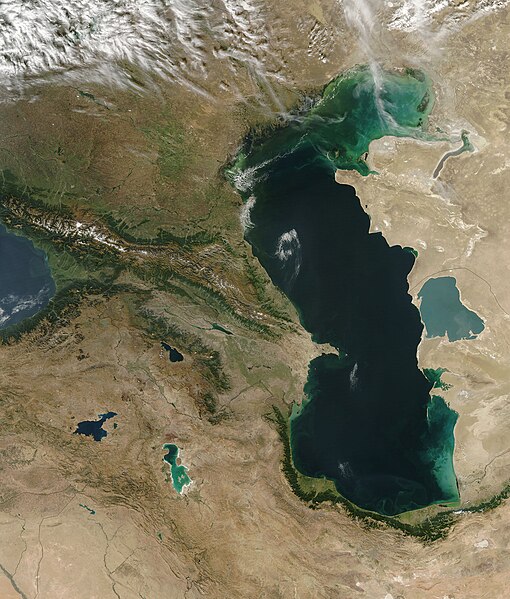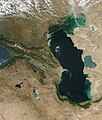Fil:Satellite image of the Caucasus-Caspian Region.jpg

Størrelse på denne forhåndsvisningen: 510 × 599 piksler. Andre oppløsninger: 204 × 240 piksler | 409 × 480 piksler | 654 × 768 piksler | 872 × 1 024 piksler | 1 703 × 2 000 piksler.
Opprinnelig fil (1 703 × 2 000 piksler, filstørrelse: 1,29 MB, MIME-type: image/jpeg)
Filhistorikk
Klikk på et tidspunkt for å vise filen slik den var på det tidspunktet.
| Dato/klokkeslett | Miniatyrbilde | Dimensjoner | Bruker | Kommentar | |
|---|---|---|---|---|---|
| nåværende | 26. okt. 2005 kl. 07:44 |  | 1 703 × 2 000 (1,29 MB) | Brian0918 | Caspian Sea and Georgia Sometimes referred to as the Caucasus Isthmus, the Caucasus-Caspian Region is a mixing-pot for scores of cultures. Due in part to its geographic isolation and having been in the path of numerous Eurasian migrations over the cent |
Filbruk
Den følgende siden bruker denne filen:
Global filbruk
Følgende andre wikier bruker denne filen:
- Bruk i ar.wikipedia.org
- Bruk i ast.wikipedia.org
- Bruk i bg.wikipedia.org
- Bruk i en.wikipedia.org
- Bruk i fr.wikipedia.org
- Bruk i fr.wiktionary.org
- Bruk i gcr.wikipedia.org
- Bruk i ky.wikipedia.org
- Bruk i mg.wikipedia.org
- Bruk i nn.wikipedia.org
- Bruk i oc.wikipedia.org
- Bruk i pt.wikibooks.org
- Bruk i sq.wikipedia.org


